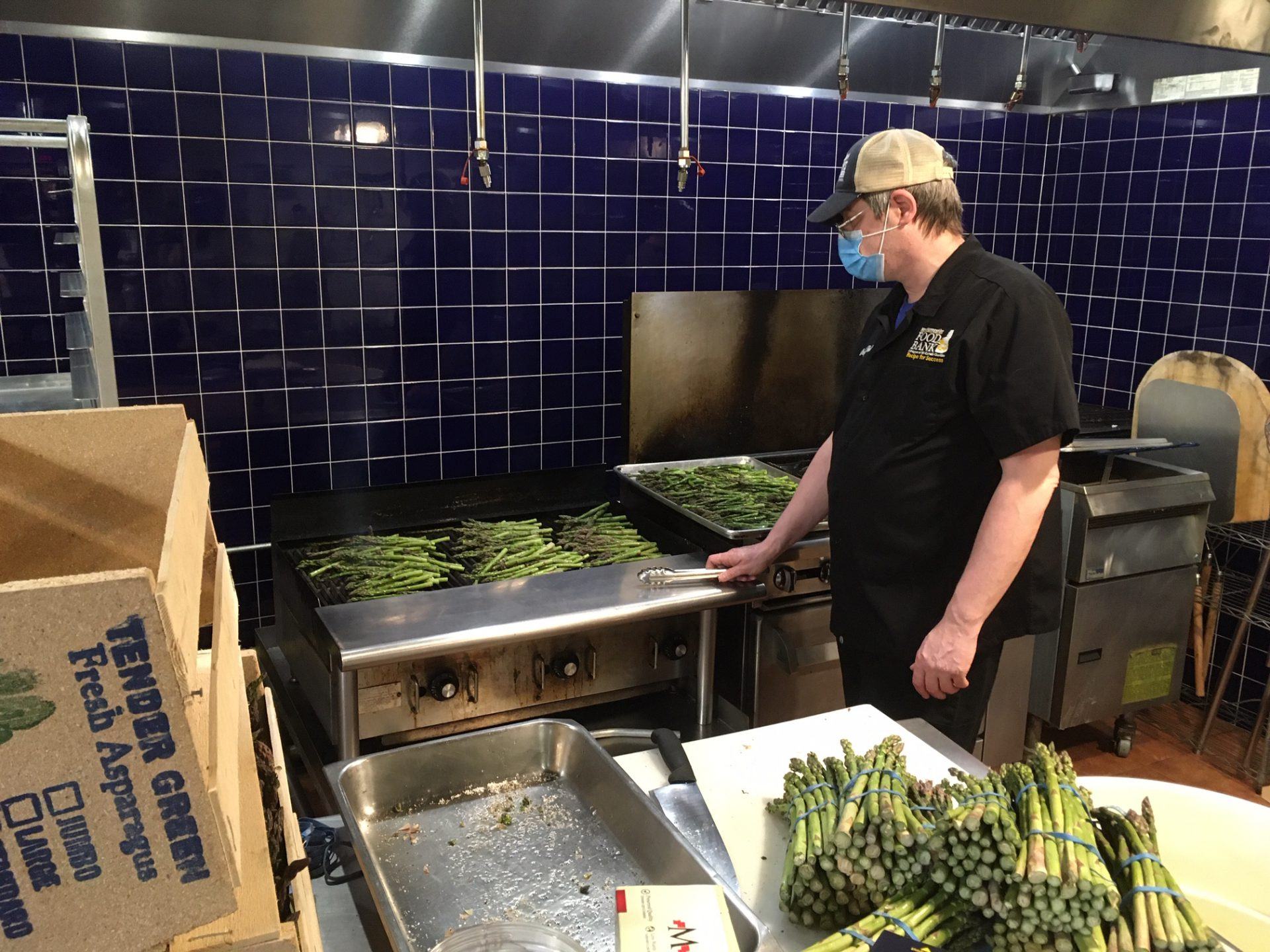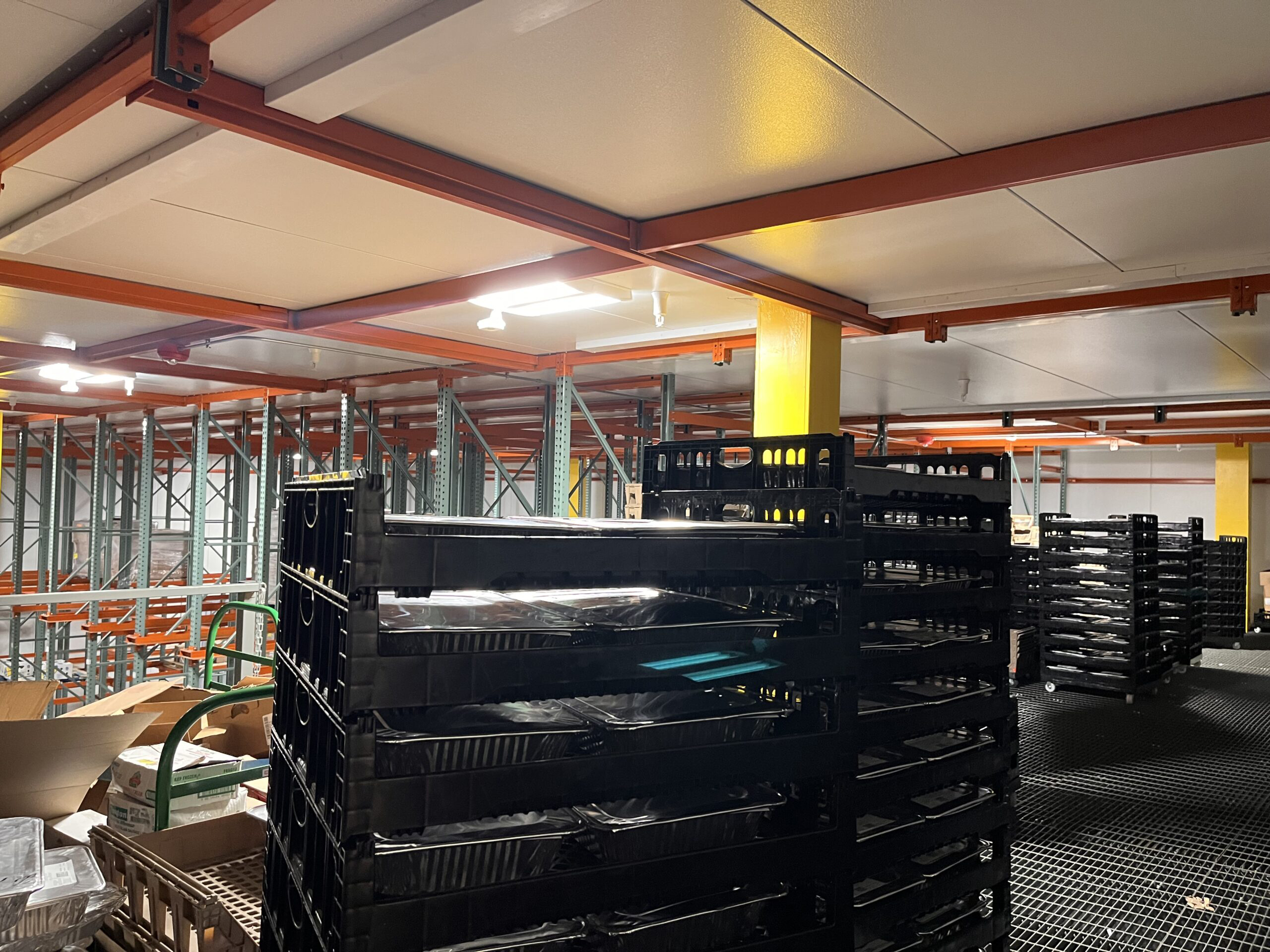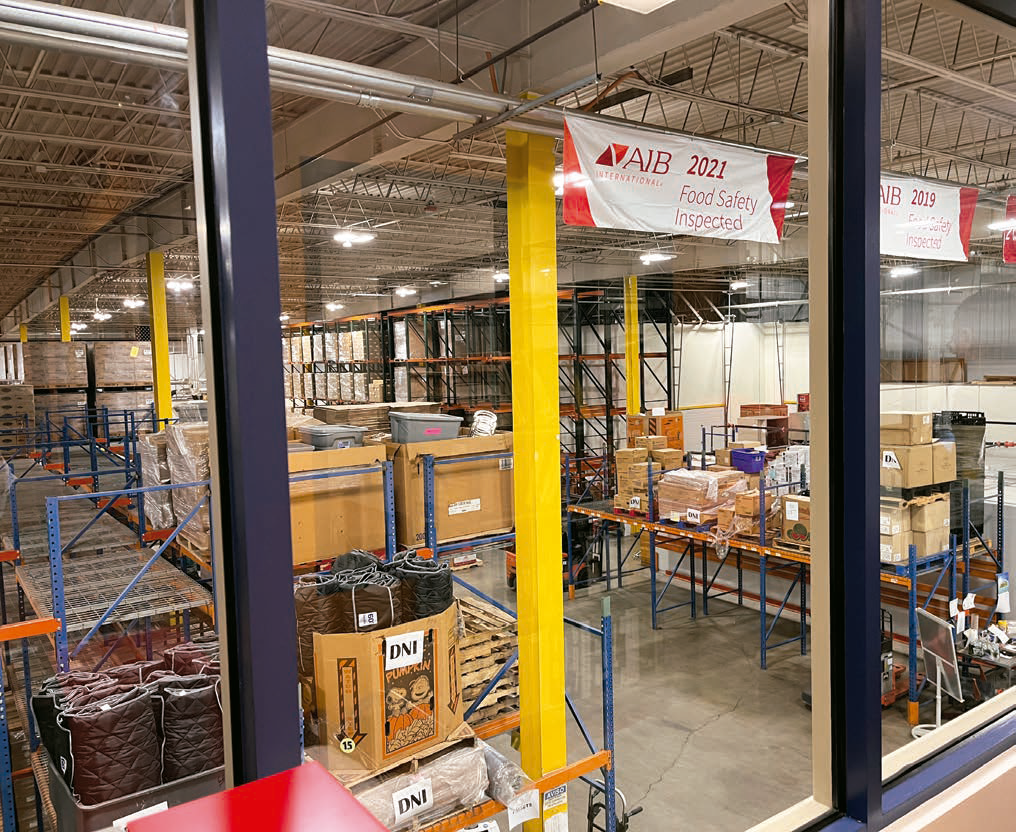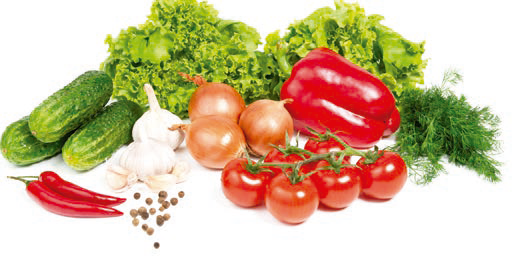Rising food prices, climate change, creative challenges for NH Food Bank

NH Food Bank Chef Paul Morrison in the organization’s kitchen. (Courtesy photo) On a Friday morning in late March, the NH Food Bank’s industrial kitchen was alive with the whirring of mixers, volunteers chopping vegetables and staff stopping by to chat and tell Chef Paul Morrison that yesterday’s green goddess dressing was “so fresh” and how delicious his pot du creme tasted.
“It’s lots of work but worth it,” Morrison said. And for food-insecure state residents, the Food Bank is more than “worth it” — it is a lifeline. The organization, a program of Catholic Charities New Hampshire and Feeding America — the nation’s largest hunger-relief organization — provides supplementary food assistance to residents around the state, delivering more than 13 million meals in 2022.
The Food Bank also promotes food system resilience by partnering with local farmers.
But lately, food has not been flowing so freely for the nonprofit organization. A perfect storm of the Covid-19 pandemic and the ongoing war in Ukraine have fueled food price hikes that have impacted the organization. But a still larger threat looms on the horizon for those laboring to bring nutrition to the food insecure: climate change.
According to the 2021 New Hampshire Climate Assessment, the state will experience more frequent short-term droughts similar to the summer of 2022’s dry spell that sent 90 percent of Hillsborough County into a severe drought. Global temperatures will continue to rise, but New Hampshire will not see an increase in total precipitation to balance the increased amount of moisture lost to evaporation.
Cameron Wake, a climate expert at the University of New Hampshire and an author of the climate assessment report, noted that while warmer temperatures could extend New Hampshire’s growing season, associated droughts are quickly shriveling the state’s orchards, drying irrigation pumps and cracking parched soil. Floods, he noted, will become more common because drought-ridden soils aren’t able to absorb torrential rains delivered by frequent, stronger storms.
Speaking to the Valley News, Rebecca Nelson, owner of Beaver Pond Farm in Newport, said that unpredictable weather due to climate change is making it difficult to grow crops.
“The extremes are disconcerting, with swings from drought to overly wet the last couple of years, and raising crops has become risky and hard to plan,” she said.
Stressed crops
Other local farmers discussed how temperature extremes have delayed planting and stressed crops while extreme precipitation events flood their fields after lengthy dry spells.
As crops wither, farmers in the state and across the country search for solutions such as novel drought-resistant varieties.
But Eileen Groll Liponis, executive director of the NH Food Bank — ever aware of the systems that support the food bank’s mission — fears that the new strains “won’t be developed fast enough.”
The Food Bank purchases inventory from over 200 local farms through the NH Feeding NH program, developed by the food bank in partnership with the NH Food Alliance, NH Farm Bureau and Northeast Organic Farming Association of New Hampshire.
The 2022 USDA State Agriculture Overview recorded 4,100 individually operating commercial farms in NH, though most are small farms that don’t make more than $10,000 per year.
The USDA awarded the food bank $900,000 in 2022 to use over two years for purchasing local produce and proteins, with further funding pending. In 2021 the food bank and its partner agencies purchased over 200,000 pounds of local food, helping keep local farmers afloat and food-insecure neighbors supplied with healthy food. With funds from this grant, the food bank is expanding the NH Feeding NH program and anticipates reaching more than 129,000 people this year. Furthermore, this program funneled about $264,000 back into New Hampshire’s economy.
Increased demand, less food
While worries about future food supplies affect the food bank’s long-term planning, day-to-day operations continue. Over 16 million pounds of food flow from the food bank and into hungry hands and mouths every year. At least 7 percent of New Hampshire residents do not know where their next meal will come from, up from 5.7 percent reported by the USDA in 2021. And the food bank is feeling this demand.
The Mobile Food Pantry program began with six trips to different parts of the state in response to the pandemic. Now the program sends out trucks once a week to deliver families two boxes of food: one full of protein and one with produce. Through this program alone, the food bank distributed over two million meals to almost 125,000 New Hampshire residents in 2021, up 55 percent compared to pre-pandemic figures.
When asking about food insecurity in New Hampshire, go up north, Liponis said, “you get honest answers.”
For example, at a Coos County drop-off location, Liponis met five different women who said they gave up protein in their diets because it was too expensive. Mobile food pantries helped fill that need by supplying perishable items, such as milk, that historically have been difficult for conventional food pantries to distribute.

Many shipments from Feeding America’s bulk-purchasing program now line the shelves of the state’s only food bank. (Photo by Chloe Gross)
Demand for food has increased. But so has the cost of food, which has slowed the flow of donations into the food bank. Grocery stores and personal budgets both feel the squeeze: since the same amount of money purchases less food, there is little left over to donate. Most of the food bank’s inventory used to be supplied by donations from community food drives and fundraisers. But now, more food must be purchased to keep up with demand.
Liponis, who oversees the purchasing of mass amounts of food, said that many shipments from Feeding America’s bulk-purchasing program now line the shelves of New Hampshire’s only food bank. And the $250,000 that used to cover a year’s worth of expenditure now barely stretches through one month, she added.
Sourcing protein is especially difficult, partially due to long-term droughts in the western U.S. and supply chain issues. Liponis explained that larger storm events, caused by atmospheric instability due to climate change, destroy feed crops and wash out infrastructure, both of which drive up meat prices.
Systemic droughts forced many farmers to abandon their annual crops last summer, including tomatoes, potatoes and carrots, to save their long-term investment in orchard crops. Last summer’s estimated tomato price increases have come to fruition: the projected 1 million ton drop in production created a price jump from last year’s $105 per ton to $138 per ton, according to the agriculture information magazine “The Grower.” Basics such as pasta sauce and ketchup have consequently seen recent price increases, not making it any easier for low-income residents to make ends meet.
In the winter, for the food insecure, “it’s heat or eat,” noted Liponis.

Demand and costs for food has increased, which has slowed the flow of donations into the NH Food Bank’s warehouse. (Photo by Chloe Gross)
But summertime does not bring reprieve from the choice between eating and paying bills: according to the recent New Hampshire climate assessment, the average number of days above 65 degrees Fahrenheit has increased by 74 percent since 1971, and this warming trend is not projected to slow anytime soon. Increasing temperatures will increase energy costs as air conditioning becomes more necessary in the summer, even in northern parts of the state. And as for putting food on the table any time of the year?
Liponis said, “It’s not gonna get any easier.” In light of continuing Big Ag issues and heightened need for food assistance, the food bank has turned to New Hampshire’s local agricultural system.
Liponis said that supporting the local food system is a key component of sustainability and climate resilience. Food Solutions New England, a program of the University of New Hampshire’s Sustainability Institute and parent organization of the NH Food Alliance, seeks to strengthen New England’s local food system. The program’s current vision is “50 by 60” — that is, New England aims to produce 50 percent of its food supply by 2060 to combat food insecurity, economic and environmental food scarcity projections and climate change.
Liponis said that transitioning to sustainable agriculture is pivotal to fighting climate change. And using more local foods may be one key: local foods don’t emit emissions from international travel, small farming businesses support regional economies, and regenerative farming practices can heal worn-out soils and lock away carbon.
While fighting climate change wasn’t the New Hampshire Food Bank’s original goal, it turns out that what is good for feeding people is good for creating climate resilience, too. And in the meantime, Liponis and the Food Bank will keep fighting food insecurity, one obstacle at a time.
Chloe Gross is a senior at UNH, where she studies environmental conservation and sustainability with a minor in forestry and a concentration in science writing. This article is being shared by partners in the Granite State News Collaborative. For more information, visit collaborativenh.org.
The 2022 USDA State Agriculture Overview recorded 4,100 individually operating commercial farms in NH, though most are small farms that don’t make more than $10,000 per year.